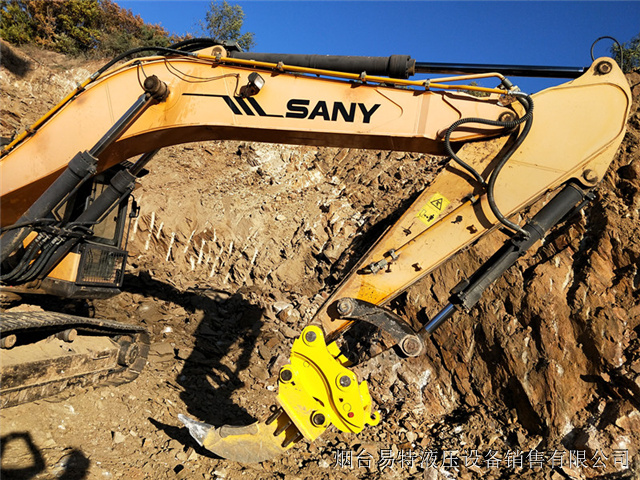Ditching can be said to be one of the basic operations of excavators, which seems simple but has high technical content. In the process of digging a trench, many novices often have problems such as not digging straight, running off, and wide or narrow at the bottom of the trench. So what are the operation skills of digging trenches?
No.1 The trench must be dug straight
Digging the trench is basically to follow the principle of digging straight, generally on the site will use the line of the lime trench drawn, the chassis line of the excavator is aligned with the lime line, the middle of the bucket teeth correspond to the lime line, so it is not easy to dig and run off.
If there is no lime line, you can use the track to press out a connection line, and the track trace left can play the role of lime line. The movement of the bucket can be adjusted according to the track marks left by the retreating.
No.2 Ditch the surface first
When the formal excavation, first take the surface layer, then take the lower layer, must not be excavated at one time to the end, especially the excavation of deep trenches is especially important; When it comes to digging trenches larger than the width of the bucket, dig both sides first, and then dig the middle.
No.3 Maintain slope flatness
Many novice trenchers are not digging well, mainly because they do not put the principle of tidiness, and the details of the operation need to be further improved. From the beginning of the V-shaped ditch to the most after the slope to maintain the same slope, of course, more soil and ditch depth is different, slope.Adjustments need to be made accordingly.
No.4 Control of the bottom of the ditch
The control of the bottom of the ditch is crucial, and this time you need to use the skills of swinging and leveling. If the trench is to install water pipe drainage, it needs to have a certain slope at the bottom; If it’s a building foundation pit then you want the bottom level.
In fact, many operators can not see the height of the bottom of the ditch, when there are surveyors, you can ask the construction worker to measure through the instrument, and measure while digging. When there is no time to find some reference, you should get off and observe more.
No.5 Three ways to dig a trench
The above has briefly introduced the basic operation skills of digging ditches, and introduced three ways of digging ditches:
(1) Riding excavation: mainly in the open area of the site, the excavator is parked in the middle of the trench to be excavated, and the bucket is dug in the middle of the two tracks.
(2) Along the side: it refers to the relatively narrow zone of the site, like the clean water channel, the bucket only digs along the track line on one side (the slope skills are needed here).
(3) Opposite type: mainly for the excavation of highway culvert pipe trenches, it means that the excavator is parked at 90 degrees opposite the ditch edge (it should be noted that when the ditch is relatively deep, the bucket cylinder may touch the ditch edge)
In short, in the process of digging trenches, the machine needs to pay special attention to digging straight, the smoothness of the slope, the control of the bottom of the ditch, etc., to choose the right way to open the ditch, in fact, it is not difficult to open the ditch.

Post time: Jan-23-2025




